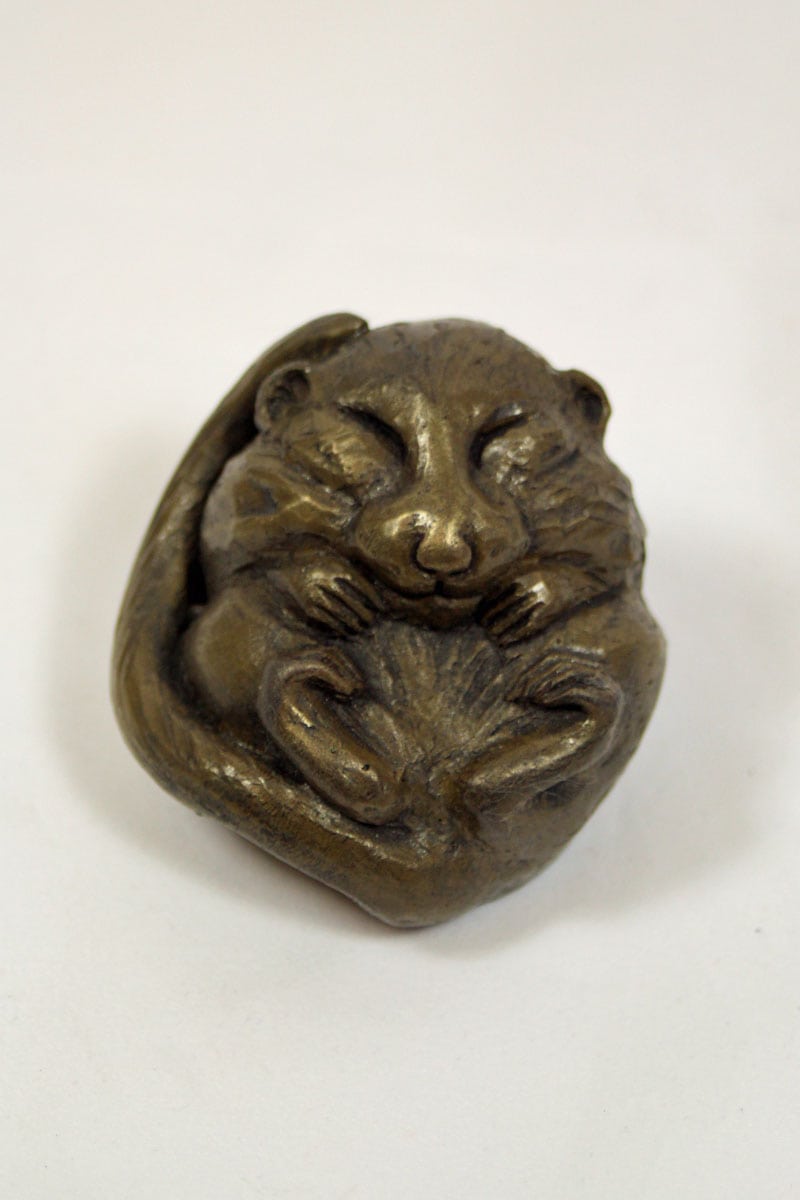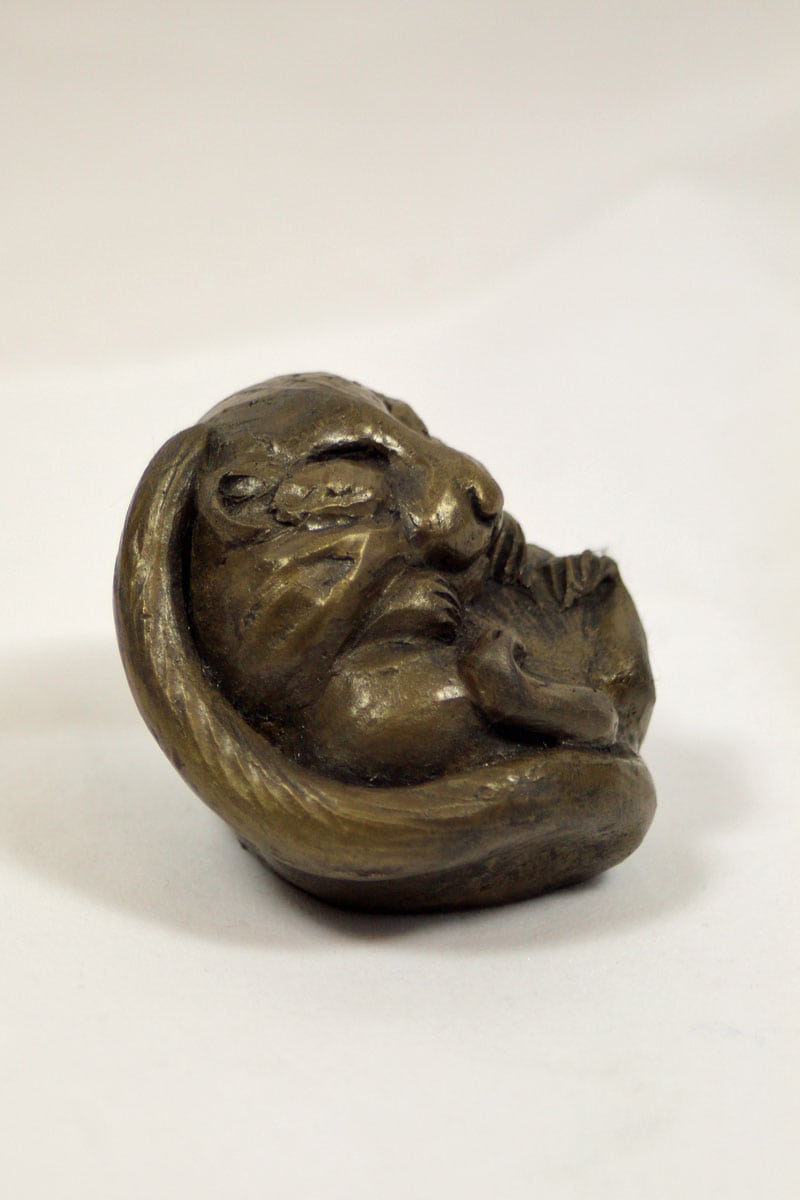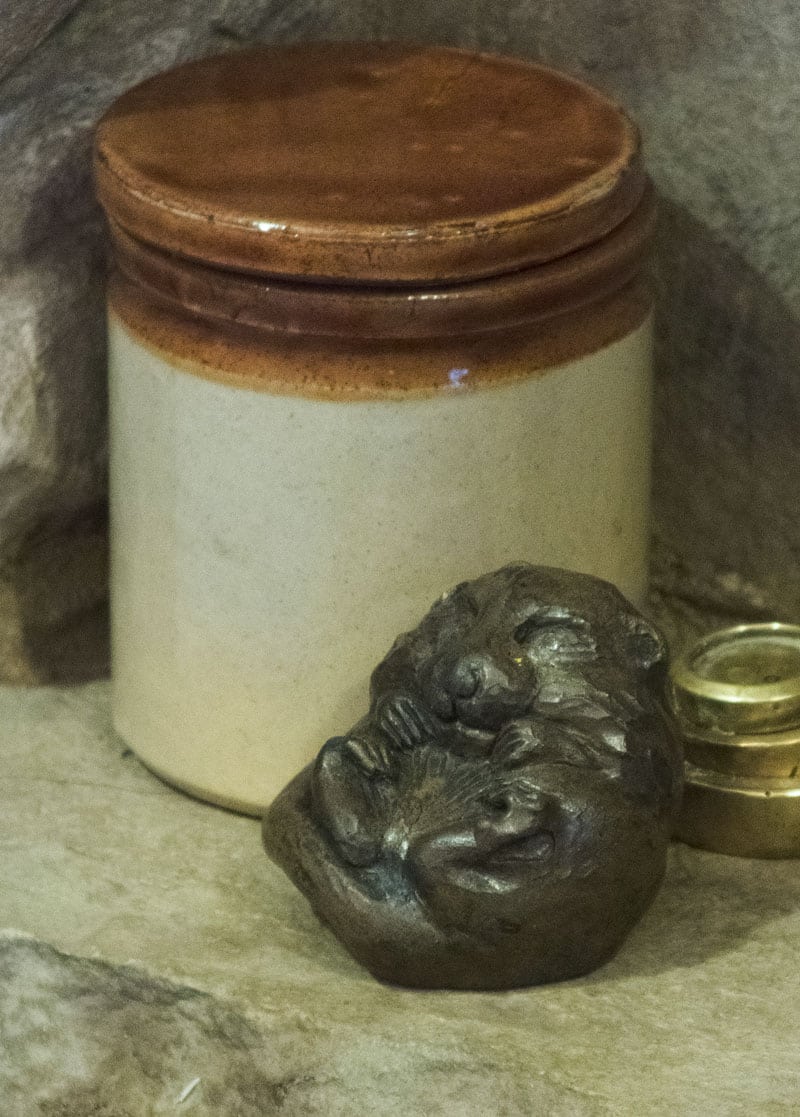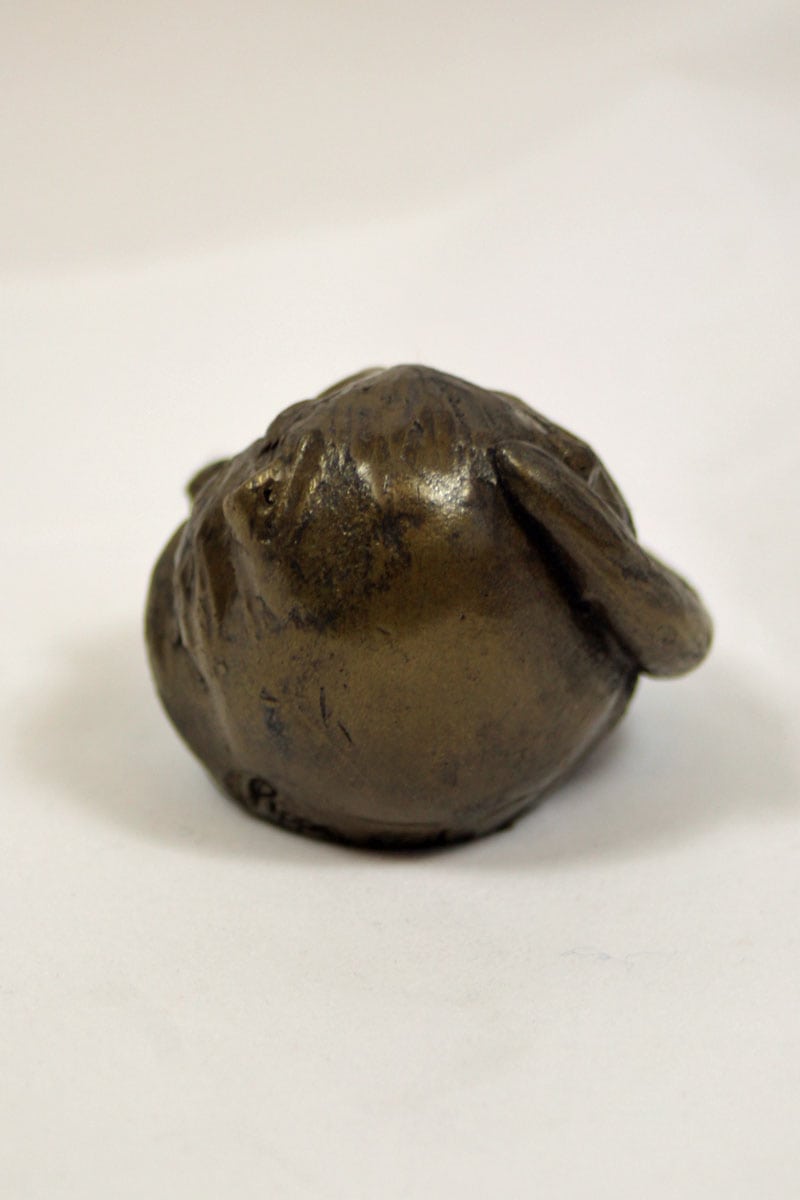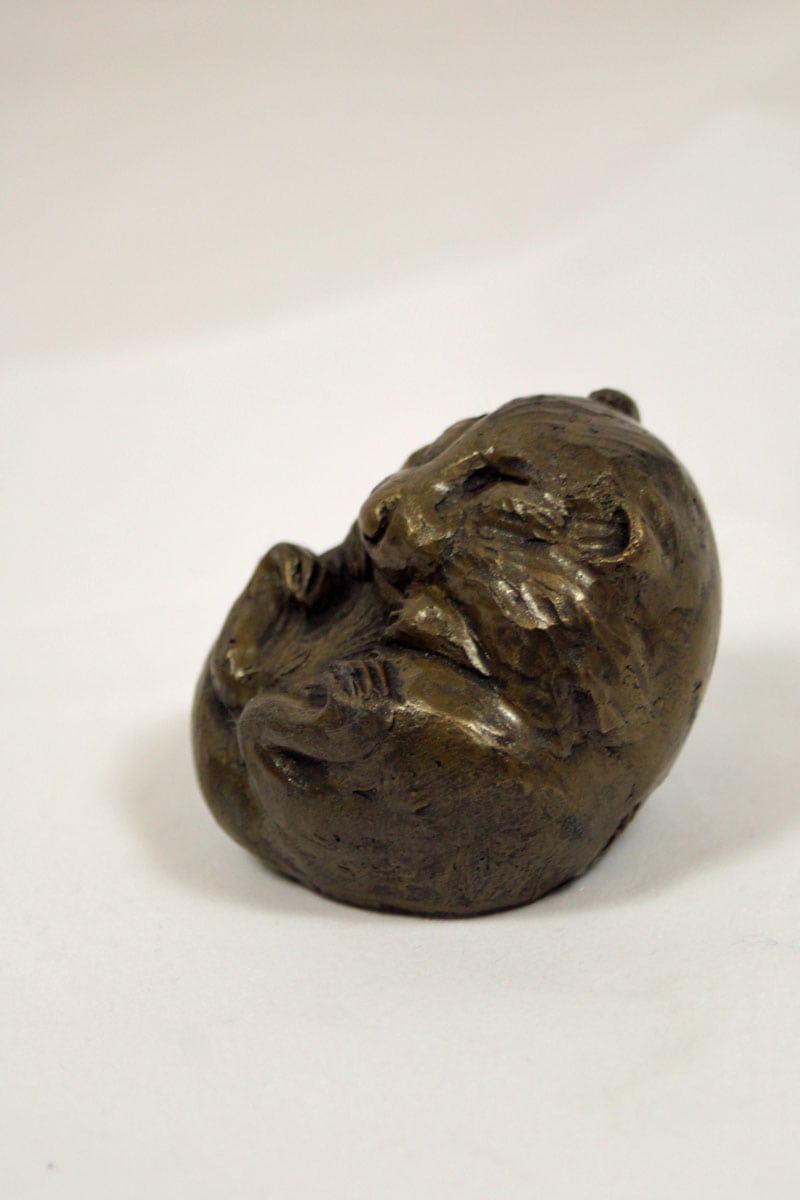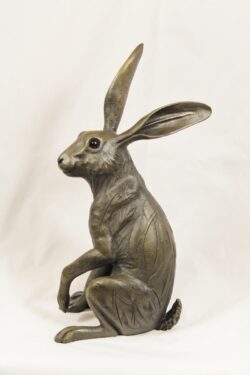Description
bronze resin Dormouse asleep
You might think you need to be careful not to wake my bronze resin Dormouse asleep, but don’t worry she’s a pretty sound sleeper. Contrary to popular belief, hibernation isn’t actually sleep, in fact animals that hibernate have to actually warm up periodically to come out of hibernation in order to go for a period of sleep.
Dormice
Hazel or common dormice have golden-brown fur and large black eyes and, distinctively, they are the only small British mammal with a furry tail. They are nocturnal and spend almost all of their time in the branches of trees during the summer, rarely coming down to the ground. They have sometimes been found asleep in old bird nests but they weave their own nests (often in brambles or other shrubs) from strips of honeysuckle bark or a similar plant, surrounded by a layer of green leaves. When conditions are cold or wet, or if food is scarce, dormice curl up into a ball and go into a state similar to hibernation for a short time (called torpor) in order to save energy. Between October and May dormice hibernate in nests beneath the leaf litter on the forest floor or in the base of hedgerows.
Dormice are require a range of foods. In spring they will feed on the flowers of oak, hawthorn, sycamore and willow and as the season progresses move onto later flowering shrubs such as honeysuckle and bramble. During the summer they take advantage of caterpillars, aphids and wasp galls and then they fatten up for hibernation on fruits and berries such as blackberries and hazelnuts.
The average litter size is four and these are typically born in July or August but litters may be born as early as late May or early June. Young dormice are weaned after about one month but may remain with the mother as juveniles before they become independent and disperse. They must reach a weight of between 15-18g to survive the winter hibernation. Dormice usually just have a single litter but those that breed early may be able to have a second.
Hazel dormice are endangered and threatened with extinction.
